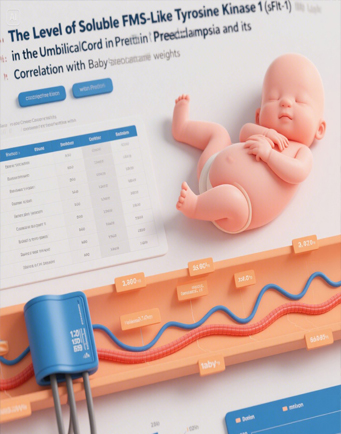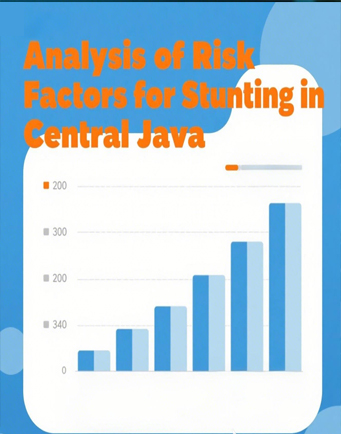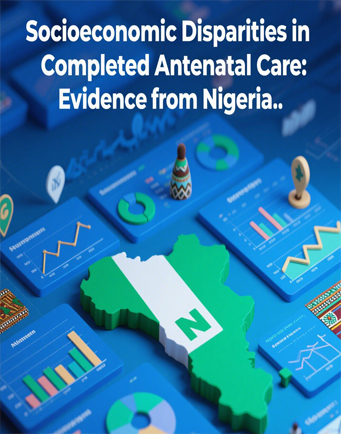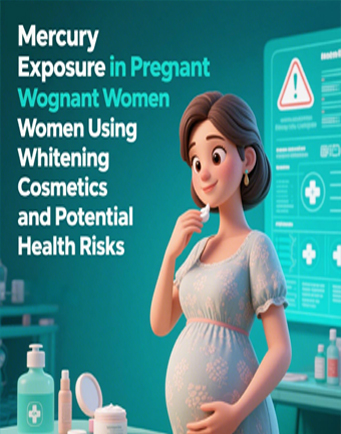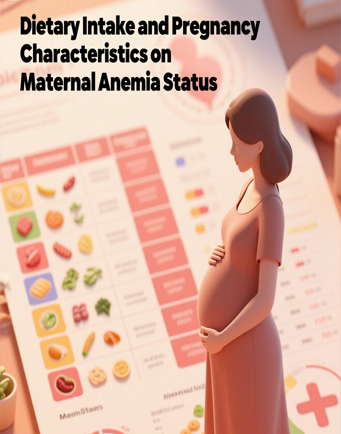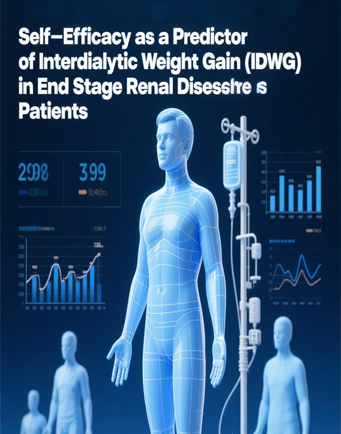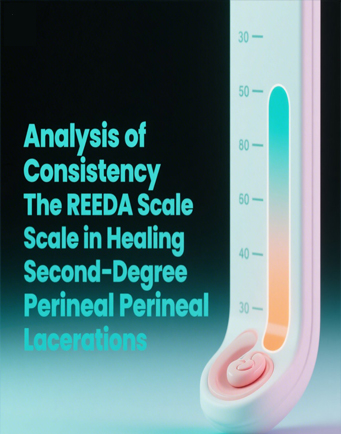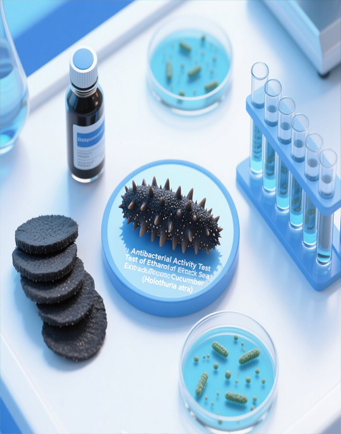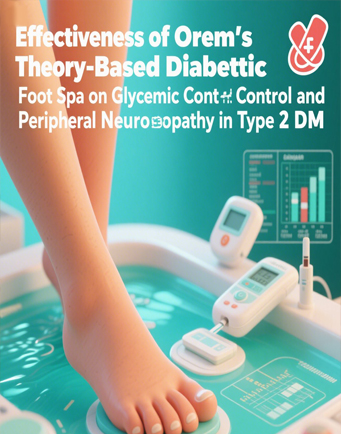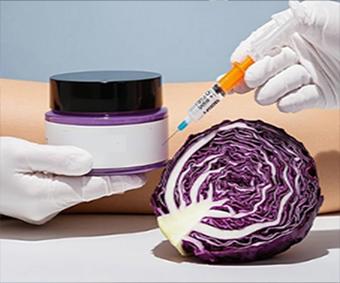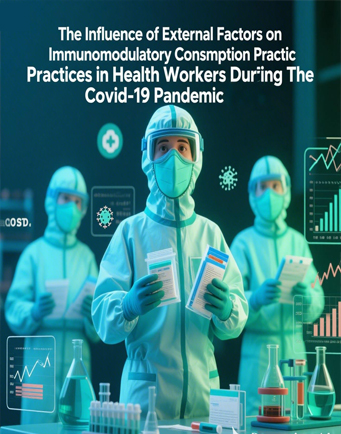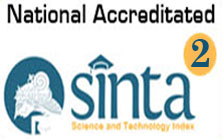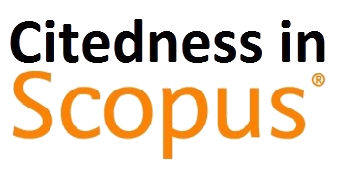Quality Evaluation and Flavonoid Content of Honey from Riau Forest, Indonesia
Downloads
Honey is a naturally sweet liquid produced by bees from flower nectar, which varies in quality and flavonoid content due to the food source, environment and the bees that produce it. This study aims to evaluate the quality and flavonoid content of honey from the Riau Forest of Indonesia. Quality testing was conducted in accordance with SNI 8664:2018 with sensory, physical, chemical and microbiological parameters. Flavonoid testing was carried out qualitatively using HPLC. The test results showed that the sensory profile of honey was in accordance with the standard, sweet taste, distinctive aroma, brown colour and thick shape. Chemical parameters obtained values of moisture content of 21.92%, diastase enzyme 3.13 DN and HMF 4.14 mg/kg have met the requirements. However, the reducing sugar of 54.1% is still below the requirement. Heavy metal parameters (Pb, Cd, As and Hg) were not detected and microbiological ALT 3.0 x 10 and yeast mould <10 colonies/gr that have met. Furthermore, the results of flavonoid qualitative tests detected several types including Luteolin, Mangiferin, Smiglanin, maltol, isoflavones, quercetin, Cnidimol C, Norcimifungin, Apigenin, Methyl ophiopogonanone B, Pectolinarigenin, Kusenol C, 3,5,6-trihydroxy-4',7-dimetoxyflavone and Lupinifoline. The conclusion of this study shows that honey from Riau forests fulfils most of the quality requirements and has a diverse flavonoid content.
Ahmed, S., & Othman, N. H. (2013). Honey as a potential natural anticancer agent: a review of its mechanisms. Evidence‐Based Complementary and Alternative Medicine, 2013(1), 829070. https://doi.org/10.1155/2013/829070
Ahmed, S., Sulaiman, S. A., Baig, A. A., Ibrahim, M., Liaqat, S., Fatima, S., ... & Othman, N. H. (2018). Honey as a potential natural antioxidant medicine: an insight into its molecular mechanisms of action. Oxidative medicine and cellular longevity, 2018(1), 8367846. https://doi.org/10.1155/2018/8367846
BSN. (1998). Meotode Uji Cemaran logam dalam Makanan SNI 01-2896 -1998. Badan Standarisasi Nasional.
BSN. (2018). SNI 8664:2018 Tentang Madu. Badan Standarisasi Nasional.
Bt Hj Idrus, R., Sainik, N. Q. A. V., Nordin, A., Saim, A. Bin, & Sulaiman, N. (2020). Cardioprotective Effects of Honey and Its Constituent: An Evidence-Based Review of Laboratory Studies and Clinical Trials. International Journal of Environmental Research and Public Health, 17(10), 3613. https://doi.org/10.3390/ijerph17103613
Cabrera, M., & Santander, E. (2022). Physicochemical and sensory analysis of honeys from eastern Formosa province (Argentina) and its relationship with their botanical origin. Food Chemistry Advances, 1, 100026. https://doi.org/10.1016/j.focha.2022.100026
Cheung, Y., Meenu, M., Yu, X., & Xu, B. (2019). Phenolic acids and flavonoids profiles of commercial honey from different floral sources and geographic sources. International Journal of Food Properties, 22(1), 290–308. https://doi.org/10.1080/10942912.2019.1579835
Chirife, J., Zamora, M. C., & Motto, A. (2006). The correlation between water activity and% moisture in honey: Fundamental aspects and application to Argentine honeys. Journal of Food Engineering, 72(3), 287-292. https://doi.org/10.1016/j.jfoodeng.2004.12.009
Demaku, S., Aliu, A., Sylejmani, D., Ahmetaj, B., & Halili, J. (2023). Determination of Heavy Metals in Bee Honey as a Bioindicator in the Istog, Drenas and Kastriot Regions. Journal of Ecological Engineering, 24(5), 191–200. https://doi.org/10.12911/22998993/161654
Dygas, D., Nowak, S., Olszewska, J., Szymańska, M., Mroczyńska-Florczak, M., Berłowska, J., Dziugan, P., & Kręgiel, D. (2021). Ability of yeast metabolic activity to reduce sugars and stabilize betalains in red beet juice. Fermentation, 7(3), 1–14. https://doi.org/10.3390/fermentation7030105
Edo, G. I., Onoharigho, F. O., Akpoghelie, P. O., Akpoghelie, E. O., Agbo, J. J., Agoh, E., & Lawal, R. A. (2023). Natural Honey (Raw Honey): Insights on Quality, Composition, Economic and Health Effects: A Comprehensive Review. Food Science and Engineering, November, 265–293. https://doi.org/10.37256/fse.4220232713
Erejuwa, O. O., Sulaiman, S. A., & Ab Wahab, M. S. (2012). Honey: A novel antioxidant. Molecules, 17(4), 4400–4423. https://doi.org/10.3390/molecules17044400
Evahelda, E., Pratama, F., & Santoso, B. (2017). The changes of moisture content, pH, and total sugar content of honey originated from the flowers of Bangka rubber tree during storage. Int. J. Sci. Eng. Res, 5(5), 33-36.
Food Review Indonesia. (2020). Potensi Madu Indonesia. Food Review Indonesia. Retrieved from https://foodreview.co.id/blog-5670113-Potensi-Madu-Indonesia.html
Gašić, U. M., Milojković-Opsenica, D. M., & Tešić, Ž. L. (2017). Polyphenols as possible markers of botanical origin of honey. Journal of AOAC International, 100(4), 852–861. https://doi.org/10.5740/jaoacint.17-0144
Harborne, J. B., & Williams, C. A. (2000). Advances in flavonoid research since 1992. Phytochemistry, 55(6), 481–504. https://doi.org/10.1016/s0031-9422(00)00235-1
Hasanah, S., Kiromah, N. Z. W., & Fitriyati, L. (2023). Uji Angka Lempeng Total (ALT) Dan Angka Kapang Khamir (AKK) Pada Jamu Gendong Di Pasar Tradisional Wonokriyo Kecamatan Gombong Kabupaten Kebumen. Jurnal Farmasi Sains Dan Terapan, 10(1), 51–56. https://doi.org/10.33508/jfst.v10i1.4195
Hassanpour, S. H., & Doroudi, A. (2023). Review of the antioxidant potential of flavonoids as a subgroup of polyphenols and partial substitute for synthetic antioxidants. Avicenna Journal of Phytomedicine, 13(4), 354–376. https://doi.org/10.22038/AJP.2023.21774
Ichsan, D. S., Hafidzah, T. S., Putri, S. B., Aurene, S. V., & Nurdin, I. (2022). Deteksi Madu Palsu Dan Kualitas Madu Dengan Enzim Diastase. Poltekita : Jurnal Ilmu Kesehatan, 16(3), 278–283. https://doi.org/10.33860/jik.v16i3.1685
Karabagias, I. K., Vavoura, M. V, Nikolaou, C., Badeka, A. V, Kontakos, S., & Kontominas, M. G. (2014). Floral authentication of Greek unifloral honeys based on the combination of phenolic compounds, physicochemical parameters and chemometrics. Food Research International, 62, 753–760. https://doi.org/10.1016/j.foodres.2014.04.015
Manoochehri, H., Hosseini, N. F., Saidijam, M., Taheri, M., Rezaee, H., & Nouri, F. (2020). A review on invertase: Its potentials and applications. Biocatalysis and Agricultural Biotechnology, 25(March), 101599. https://doi.org/10.1016/j.bcab.2020.101599
Melina, M., Adawiyah, D. R., & Hunaefi, D. (2023). Indonesian Honey Consumers’ Behavior and Sensory Preference for Commercial Trigona Honey. Jurnal Teknologi Dan Industri Pangan, 34(1), 86–97. https://doi.org/10.6066/jtip.2023.34.1.86
Olas, B. (2020). Honey and its phenolic compounds as an effective natural medicine for cardiovascular diseases in humans? Nutrients, 12(2), 1–14. https://doi.org/10.3390/nu12020283
Panche, A. N., Diwan, A. D., & Chandra, S. R. (2016). Flavonoids: an overview. Journal of Nutritional Science, 5, e47. https://doi.org/10.1017/jns.2016.41
Snowdon, J. A., & Cliver, D. O. (1996). Microorganisms in honey. International Journal of Food Microbiology, 31(1), 1–26. https://doi.org/10.1016/0168-1605(96)00970-1
Suhesti, E., & Hadinoto, H. (2015). Hasil Hutan Bukan Kayu Madu Sialang di Kabupaten Kampar (Studi Kasus : Kecamatan Kampar Kiri Tengah). Wahana Forestra: Jurnal Kehutanan, 10(2), 16–26. https://doi.org/10.31849/forestra.v10i2.227
Tafere, D. A. (2021). Chemical composition and uses of Honey: A Review. Journal of Food Science and Nutrition Research, 4(3), 194-201. https://doi.org/10.26502/jfsnr.2642-11000072
Tomás-Barberán, F. A., Ferreres, F., García-Vignera, C., & Tomás-Lorente, F. (1993). Flavonoids in honey of different geographical origin. Zeitschrift Für Lebensmittel-Untersuchung Und Forschung, 196(1), 38–44. https://doi.org/10.1007/BF01192982
Tomás-Barberán, F. A., Martos, I., Ferreres, F., Radovic, B. S., & Anklam, E. (2001). HPLC flavonoid profiles as markers for the botanical origin of European unifloral honeys. Journal of the Science of Food and Agriculture, 81(5), 485–496. https://doi.org/https://doi.org/10.1002/jsfa.836
Ververidis, F., Trantas, E., Douglas, C., Vollmer, G., Kretzschmar, G., & Panopoulos, N. (2007). Biotechnology of flavonoids and other phenylpropanoid-derived natural products. Part I: Chemical diversity, impacts on plant biology and human health. Biotechnology Journal, 2(10), 1214–1234. https://doi.org/https://doi.org/10.1002/biot.200700084
Wulandari, D. D. (2017). Kualitas Madu (Keasaman, Kadar Air, dan Kadar Gula Pereduksi) Berdasarkan Perbedaan Suhu Penyimpanan. Jurnal Kimia Riset, 2(1), 16–22.
Yunianto, A. S., & Jannetta, S. (2020). Potensi budidaya lebah madu sebagai harapan di tengah pandemi Covid-19. Unri Conference Series: Community Engagement, 2, 192–200. https://doi.org/10.31258/unricsce.2.192-200
Copyright (c) 2024 JURNAL INFO KESEHATAN

This work is licensed under a Creative Commons Attribution-NonCommercial-ShareAlike 4.0 International License.
Copyright notice
Ownership of copyright
The copyright in this website and the material on this website (including without limitation the text, computer code, artwork, photographs, images, music, audio material, video material and audio-visual material on this website) is owned by JURNAL INFO KESEHATAN and its licensors.
Copyright license
JURNAL INFO KESEHATAN grants to you a worldwide non-exclusive royalty-free revocable license to:
- view this website and the material on this website on a computer or mobile device via a web browser;
- copy and store this website and the material on this website in your web browser cache memory; and
- print pages from this website for your use.
- All articles published by JURNAL INFO KESEHATAN are licensed under the Creative Commons Attribution 4.0 International License. This permits anyone to copy, redistribute, remix, transmit and adapt the work provided the original work and source is appropriately cited.
JURNAL INFO KESEHATAN does not grant you any other rights in relation to this website or the material on this website. In other words, all other rights are reserved.
For the avoidance of doubt, you must not adapt, edit, change, transform, publish, republish, distribute, redistribute, broadcast, rebroadcast or show or play in public this website or the material on this website (in any form or media) without appropriately and conspicuously citing the original work and source or JURNAL INFO KESEHATAN prior written permission.
Permissions
You may request permission to use the copyright materials on this website by writing to jurnalinfokesehatan@gmail.com.
Enforcement of copyright
JURNAL INFO KESEHATAN takes the protection of its copyright very seriously.
If JURNAL INFO KESEHATAN discovers that you have used its copyright materials in contravention of the license above, JURNAL INFO KESEHATAN may bring legal proceedings against you seeking monetary damages and an injunction to stop you using those materials. You could also be ordered to pay legal costs.
If you become aware of any use of JURNAL INFO KESEHATAN copyright materials that contravenes or may contravene the license above, please report this by email to jurnalinfokesehatan@gmail.com
Infringing material
If you become aware of any material on the website that you believe infringes your or any other person's copyright, please report this by email to jurnalinfokesehatan@gmail.com.



